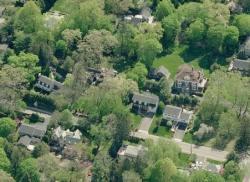New Law Requires Sellers to Disclose Credit Card Surcharges
- Details
- Written by Joanne Wallenstein
- Hits: 1159
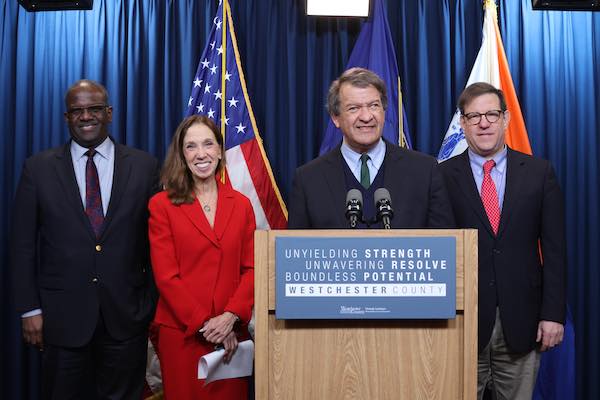 Westchester County Executive George Latimer, New York State Assemblywoman Amy Paulin and County Director of Consumer Protection Jim Maisano worked together to ensure that residents are well-informed about a new law aimed at promoting transparency in credit card transactions. Effective February 11, 2024, this new state law mandates that merchants in New York State must provide clear and conspicuous disclosure of credit card surcharges to consumers.
Westchester County Executive George Latimer, New York State Assemblywoman Amy Paulin and County Director of Consumer Protection Jim Maisano worked together to ensure that residents are well-informed about a new law aimed at promoting transparency in credit card transactions. Effective February 11, 2024, this new state law mandates that merchants in New York State must provide clear and conspicuous disclosure of credit card surcharges to consumers.
On February 16, lawmakers held a press conference to announce the passage of new legislation. Latimer said “Transparent pricing is essential for consumers to make informed decisions. This new law will empower Westchester residents by ensuring they have clear visibility into any credit card surcharges they may incur and I thank my colleague in government Assemblywoman Paulin for her efforts on its passage and Governor Hochul for signing it into law.”
Paulin added: “This new law protects New Yorkers from hidden surcharges by requiring sellers to clearly post the price of a credit card surcharge. Credit card surcharges now have to be disclosed clearly so that customers are fully aware of them upfront and not just when they go to pay. The new law also prevents businesses from charging a higher fee than what they are charged by the credit card companies. This legislation is ultimately about transparency, fairness and preventing consumers from being misled when making purchases using credits cards. I thank Jim Maisano, Director of the Westchester County Department of Consumer Protection, for bringing this important issue to my attention. His idea is now a law which will protect New Yorker consumers.”
The new law limits credit card surcharges to the amount charged to the business by the credit card company and requires businesses to clearly display the total price inclusive of any surcharges before checkout. It aims to prevent consumers from being surprised by hidden fees and ensures that they have a clear understanding of the costs associated with credit card transactions.
Maisano said: “This law reinforces the principles of fairness and transparency in commercial transactions. We are committed to ensuring that consumers are protected from deceptive practices, and this legislation is a significant step forward in achieving that goal.”
Developer Granted Approval to Raze Mid-Century Modern Home at 46 Lincoln Road
- Details
- Written by Joanne Wallenstein
- Hits: 3719
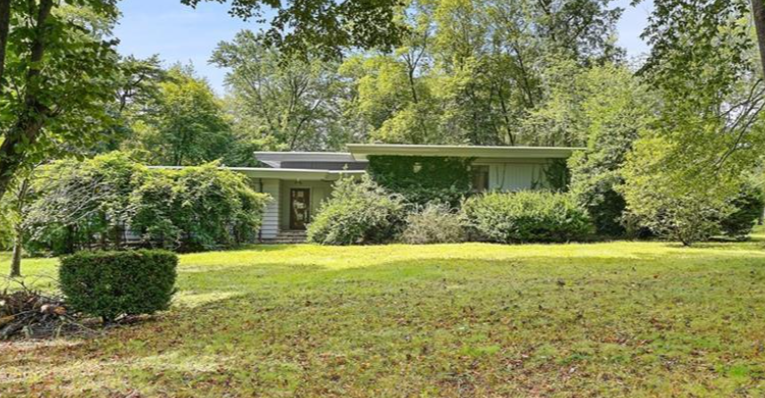 Though members of the Committee for Historic Preservation seemed to have the will to save a Mid-century modern home at 46 Lincoln Road that were unable to find a way to do it at their meeting on Tuesday February 13, 2024.
Though members of the Committee for Historic Preservation seemed to have the will to save a Mid-century modern home at 46 Lincoln Road that were unable to find a way to do it at their meeting on Tuesday February 13, 2024.
Armed with new information about the man who designed the house, those who wished to save it were hopeful that his unique history might help the house to meet one of the criteria for preservation, that “That the building is associated with the life of a person or persons of historical significance;” or “That the building is the work of a master.”
The committee had held over a decision on the house at a previous meeting until they could get the opinion of architectural historian Andrew Dolkart. However, Dolkart’s letter fell short of fully endorsing the preservation of the house. In his opinion he says, “the most interesting feature of the house is that it was designed by an engineer rather than an architect and that Francis Holbrooke was a Black mechanical engineer. He calls 46 Lincoln Road “a very good Modern house” but says that Holbrook cannot be considered a master. He concludes by saying, “the fact that a Black engineer designed a very fine Modern house in Scarsdale makes this a special, and probably unique house in the village.”
The application to take down the house was filed by Raj Krishnan a local developer who was represented by Lucia Chiocchio and Joshua Kimerling from Cuddy and Feder. They also relied on evidence from Emily Cooperman and Kyle Toth who are both architectural historians and maintained that the home did not meet the Village’s criteria for preservation.
After weighing the evidence the committee members felt that the Black engineer, Francis Holbrook could not be judged historically significant or a master architect, as he was primarily an engineer who only designed one home. Furthermore since the home had been approved for demolition in 2008 and 2021 some committee members felt that they needed to uphold precedent and not reverse a prior decision, despite the fact that Holbrook’s history was unknown at the time of the prior votes. The vote was 6-1 in favor of approving the application. Casting her vote to approve the application, committee member Amy Lawrence expressed her frustration with the dilemma. She said, “We are eliminating our examples of mid-century modern homes in Scarsdale. We are un-diversifying the architecture of Scarsdale. This is an underrepresented home style in Scarsdale and a significant example of Mid-century modern architecture.”
However, the committee was fully convinced that Francis Holbrook’s story was one to be chronicled in Scarsdale history.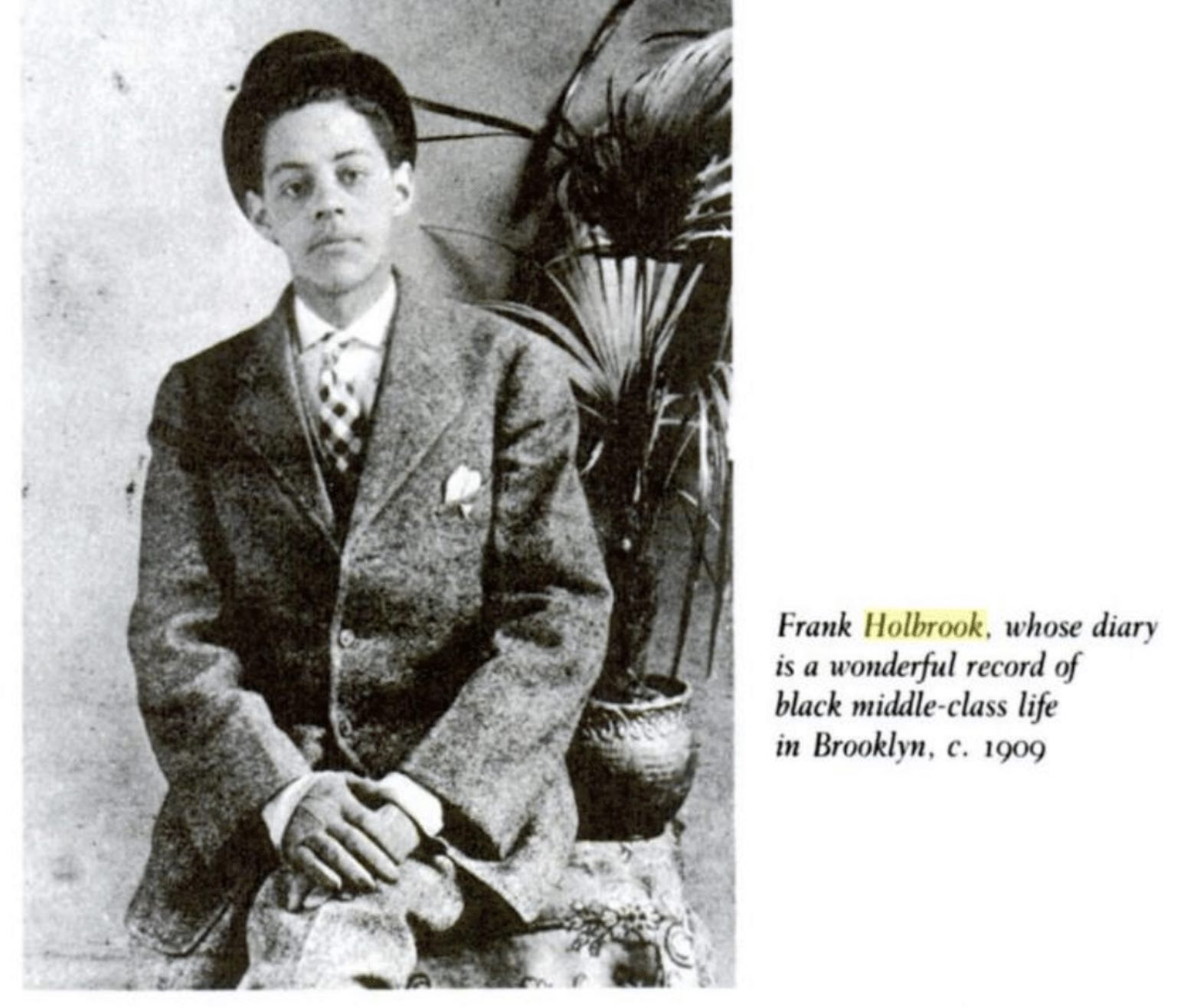 The house was designed by Black engineer Francis Holbrook, a rennaissance man with many talents. Leslie Chang from the Scarsdale Historical Society uncovered previously unknown facts about Holbrook demonstrating that he was indeed remarkable. She found that Holbrook was a mechanical engineer rather than an architect and a member of the Black professional elite of his day. He was a draftsman under Lewis Latimer, who was the only black member of “Edison’s Pioneers” who helped to bring electricity to the masses. Holbrook also worked for Alexander Graham Bell.
The house was designed by Black engineer Francis Holbrook, a rennaissance man with many talents. Leslie Chang from the Scarsdale Historical Society uncovered previously unknown facts about Holbrook demonstrating that he was indeed remarkable. She found that Holbrook was a mechanical engineer rather than an architect and a member of the Black professional elite of his day. He was a draftsman under Lewis Latimer, who was the only black member of “Edison’s Pioneers” who helped to bring electricity to the masses. Holbrook also worked for Alexander Graham Bell.
Holbrooke had connections to the family of Lena Horne, he authored several published articles about mechanical engineering and was involved in professional organizations. He was well aware of the challenges that faced Black professionals and even published an article in a Harlem-based magazine called Opportunity, The Journal of Negro Life, about the difficulties of getting jobs or internships for Black engineers.
Arguing that the home should be taken down, applicant Krishnan spoke of its condition, which is not a criteria considered by the Committee for Historic Preservation. He said, “The topography is not conducive to living. With climate change the stream that runs through the property drains 35 acres of Heathcote – and the water goes into that basement. The topography is not practical. To ask us to renovate this goes against my integrity as a physician. There is malignant mold in this house. We are asking for special dispensation.”
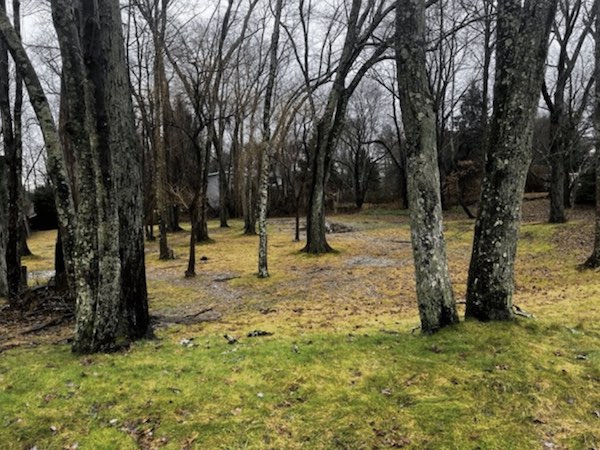 Krishnan is proposing to build a third house on the land between 101 Carthage and 46 Lincoln Roads.
Krishnan is proposing to build a third house on the land between 101 Carthage and 46 Lincoln Roads.
Ironically, water woes are not stopping Krishnan’s quest to develop the property. He currently has an application before the Planning Board to subdivide two lots at 101 Carthage Road and 46 Lincoln Road into three and build the third house between the two existing houses. The area he plans to build on is a recessed depression between the two homes that includes a watercourse. He has proposed to divert this watercourse into the Village right of way and build on an area that now serves as a collection basin for run-off.
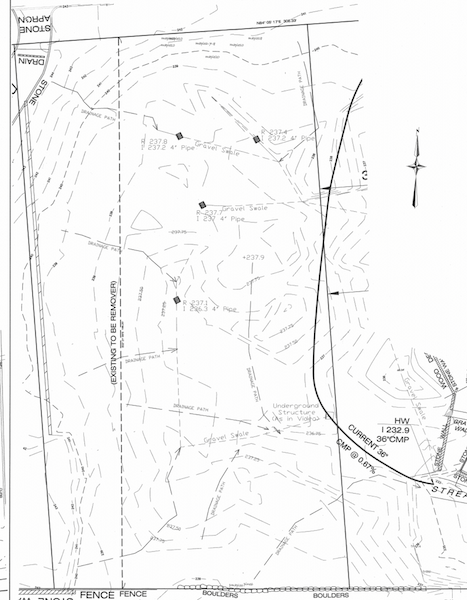 A stream runs through the property.The application was reviewed at the January 31, 2024 meeting of the Planning Board where many neighbors expressed their fears that the development would further exacerbate flooding in their East Heathcote homes and streets. The application will be considered again at the Planning Board’s next meeting on February 28, 2024. The notice for the 2-28 meeting says the Planning Board will consider the application for a three-lot subdivision and site plan approval related to disturbance in the adjoining property buffer in order to legalize an existing piped watercourse and for a wetland permit approve for regulated activities with the wetland control area.
A stream runs through the property.The application was reviewed at the January 31, 2024 meeting of the Planning Board where many neighbors expressed their fears that the development would further exacerbate flooding in their East Heathcote homes and streets. The application will be considered again at the Planning Board’s next meeting on February 28, 2024. The notice for the 2-28 meeting says the Planning Board will consider the application for a three-lot subdivision and site plan approval related to disturbance in the adjoining property buffer in order to legalize an existing piped watercourse and for a wetland permit approve for regulated activities with the wetland control area.
CNC Announces Candidate Slate for Election on March 19
- Details
- Written by Joanne Wallenstein
- Hits: 2622
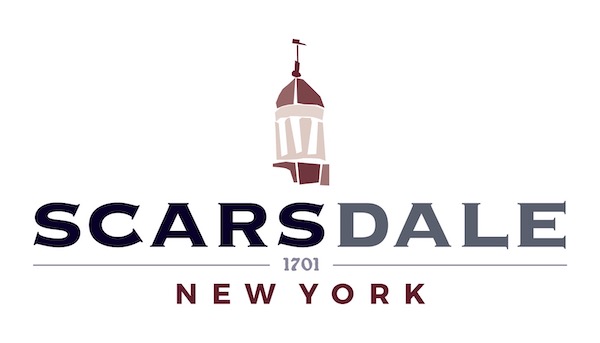 The Citizens Nominating Committee (CNC) announced January 18 the candidates it selected for the Scarsdale Citizens Non-Partisan Party slate for the following offices:
The Citizens Nominating Committee (CNC) announced January 18 the candidates it selected for the Scarsdale Citizens Non-Partisan Party slate for the following offices:
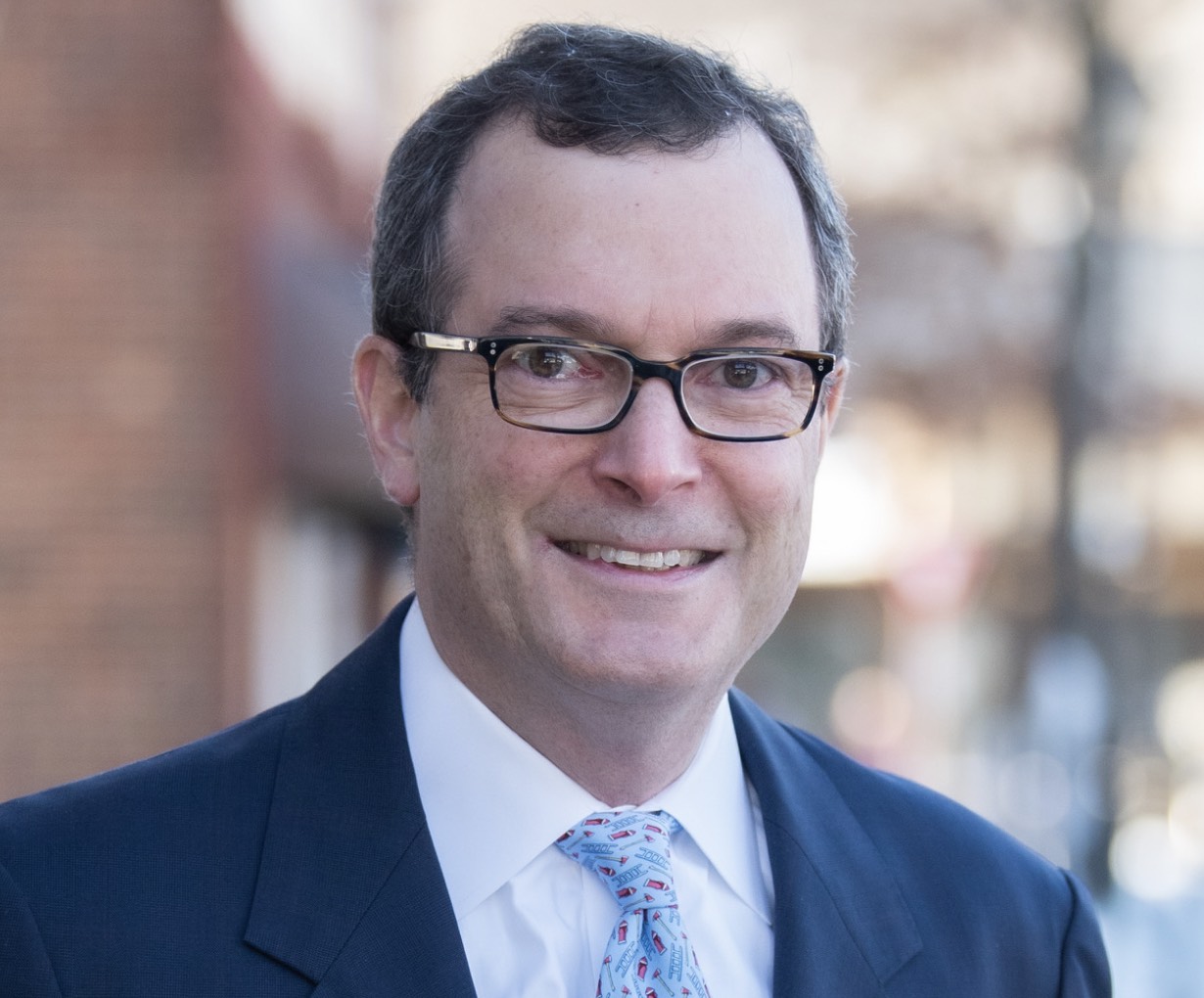 Ken Mazer is running for a second term for Village TrusteeTrustees: Ken Mazer of 47 Church Lane, a Scarsdale resident for 27 years; Jeremy Gans, of 45 Harvest Drive, a 16-year resident; and Jeremy Wise of 14 Boulder Brook Road, a 33-year resident.
Ken Mazer is running for a second term for Village TrusteeTrustees: Ken Mazer of 47 Church Lane, a Scarsdale resident for 27 years; Jeremy Gans, of 45 Harvest Drive, a 16-year resident; and Jeremy Wise of 14 Boulder Brook Road, a 33-year resident.
Michael Curti of 70 Brown Road, Scarsdale, was nominated to run for Village Justice. Judge Curti became Acting Village Justice in November 2023 when Cynthia Dunne resigned. He was then appointed Village Justice in December 2023 to fill the vacancy and finish the term through March 2024. Prior to this Judge Curti served as assistant village justice under Justice Dunne.
The general election will take place Tuesday, March 19, at the Scarsdale Public Library, 54 Olmsted Road in the Scott Room. Voting hours will be from 6:00 am to 9:00 pm.
 Jeremy Wise was nominated to run for Village Trustee.Jared Stern served as chair and Mary Pat Jones served as vice chair of the CNC. In addition to candidates for village office, the CNC elected Raju Sitaula as chair and Scott Harris as vice chair for next year’s CNC. The CNC also elected Ralph Geer to serve as vice chair of the Procedure Committee.
Jeremy Wise was nominated to run for Village Trustee.Jared Stern served as chair and Mary Pat Jones served as vice chair of the CNC. In addition to candidates for village office, the CNC elected Raju Sitaula as chair and Scott Harris as vice chair for next year’s CNC. The CNC also elected Ralph Geer to serve as vice chair of the Procedure Committee.
Starting in late November 2023, the CNC searched for potential candidates and then conducted extensive diligence. While deliberations and reference 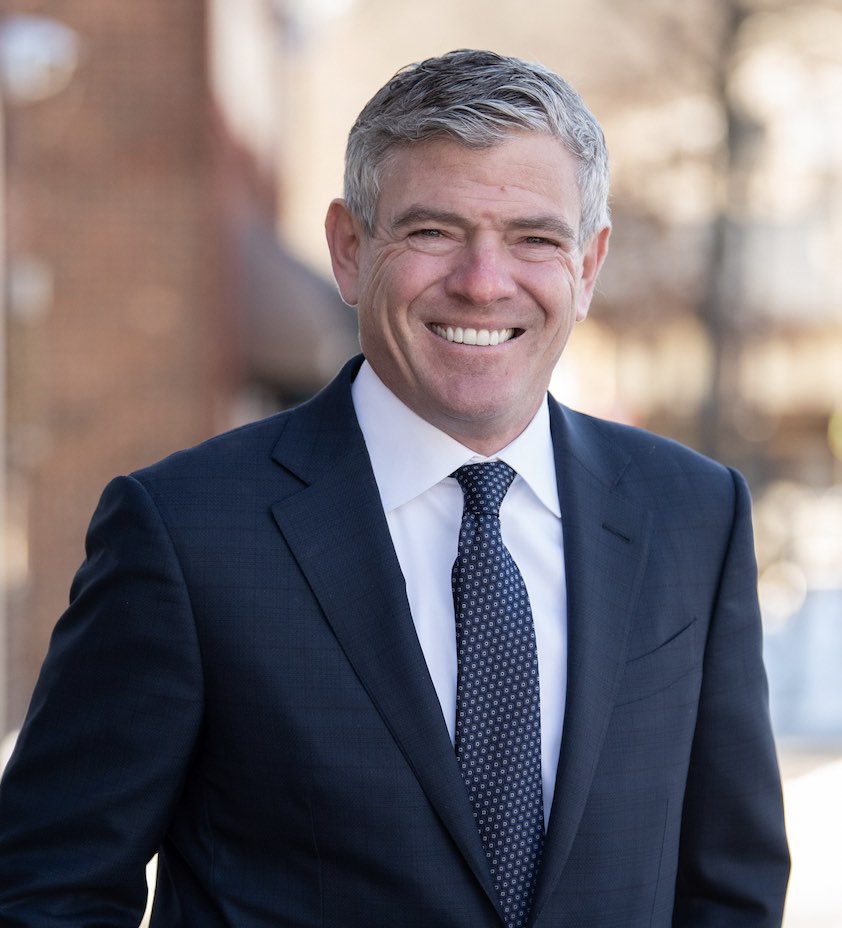 Jeremy Gans is running for a second term for Village Trustee.conversations are not shared publicly, the CNC considered and carefully researched the background, experience, and qualifications of each candidate and engaged in significant deliberation. We thank the CNC members for their hard work and diligence in selecting this strong slate of candidates.
Jeremy Gans is running for a second term for Village Trustee.conversations are not shared publicly, the CNC considered and carefully researched the background, experience, and qualifications of each candidate and engaged in significant deliberation. We thank the CNC members for their hard work and diligence in selecting this strong slate of candidates.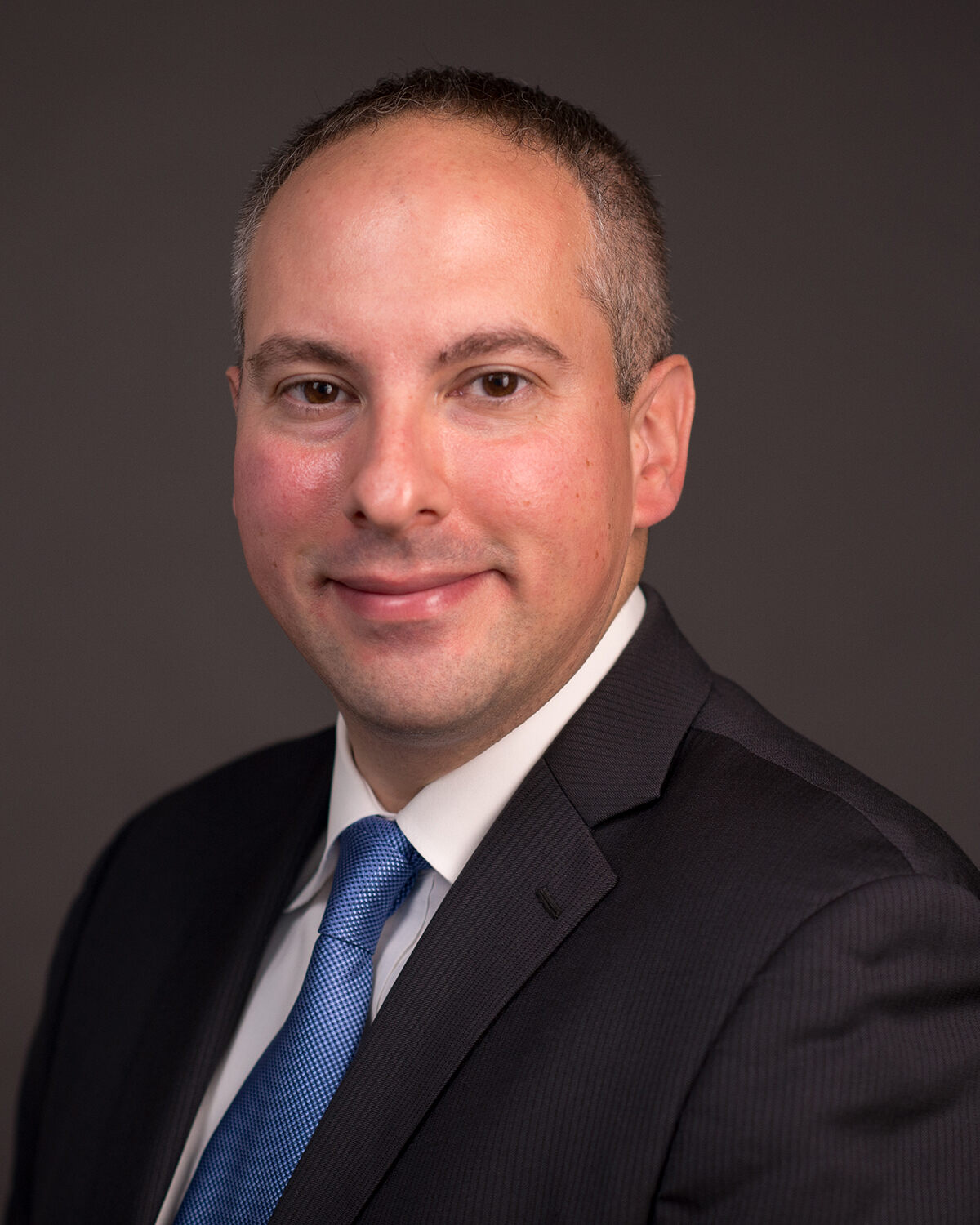 Village Justice Michael Curti
Village Justice Michael Curti
Neighbors Fear a Subdivision Will Cause Additional Flooding In Heathcote
- Details
- Written by Joanne Wallenstein
- Hits: 3015
 Though the Scarsdale Trustees imposed a moratorium on some land use applications earlier this month, several projects that were already in the works are still under consideration as the applications were filed before the moratorium was imposed.
Though the Scarsdale Trustees imposed a moratorium on some land use applications earlier this month, several projects that were already in the works are still under consideration as the applications were filed before the moratorium was imposed.
At a lengthy meeting on January 31, the Planning Board held a hearing on a proposal for a
subdivision at 46 Lincoln Road and 101 Carthage Road that would covert two lots into three. The Board spent two hours questioning an engineer and the developer’s attorney about plans to relocate an underground watercourse, remove 44 trees and build a third house in an open lot between the two existing lots.
The hearing had been rescheduled as insufficient notice of the meeting date was given when the Village newspaper suddenly ceased publication.
Representing Developer Raj Krishnan, attorney Lucia Chiocchio of Cuddy and Feder explained that the house at 101 Carthage Road would be removed and two new homes would be built. There is an application pending with the Committee for Historic Preservation to take down 46 Lincoln Road and if passed, a new home will be built there as well. All three lots meet the minimum lot size requirements. The three new homes would face Carthage Road and retention basins would be buried in the front yards.
In order to regrade the properties and improve drainage, the developer is seeking approval for “land disturbance within the adjoining property buffer.”
The plan includes the relocation of an underground water pipe that gathers water from surrounding properties and catch basins on 46 Lincoln Road. According to the attorney, the watercourse was original an open stream but was buried at some point between 1954 and 1976.
 Applicants are proposing to relocate an underground stream that runs through the property (the dark black line) to the Village Right of Way along Lincoln and Carthage RoadsThe engineer explained plans to move the water course into the Village right of way along Carthage and Lincoln Roads and to make it a part of the Village’s drainage infrastructure. The new pipe would be 42 inches in diameter and Senor said it would reduce the velocity of water coming off the property by 35%. Senor said, “The new stream would be wider and rougher and slow down the water velocity.”
Applicants are proposing to relocate an underground stream that runs through the property (the dark black line) to the Village Right of Way along Lincoln and Carthage RoadsThe engineer explained plans to move the water course into the Village right of way along Carthage and Lincoln Roads and to make it a part of the Village’s drainage infrastructure. The new pipe would be 42 inches in diameter and Senor said it would reduce the velocity of water coming off the property by 35%. Senor said, “The new stream would be wider and rougher and slow down the water velocity.”
According to Village Engineer David Goessl, “The Village Board would need to approve a resolution to put the watercourse in the Village right of way.”
Questioned as to why the property appears to be very wet and “ponds” during rainstorms, Senor claimed that a series of catch basins on the property were not maintained and that the existing pipe was corroded. The new home would be built on the site of these catch basins so he claimed there would no longer be an issue.
The engineer fielded additional questions about the plan. Since there would be very little distance between the driveways of the two new homes would there be a median for planting? Given the 8 foot difference in elevation between the proposed new homes, Senor explained that a retaining wall that rises to a height of four and a half feet would be built between the two. Goessl asked if the driveway would be wide enough for a car to turn around and get into the garage bays. About the disturbance of the buffer, Senor pointed out that since the properties are adjacent, some of the disturbance would be between the two new properties, but pointed to other areas abutting existing neighbors where regrading would need to be done in the buffer area.
Landscape Architect Walter G. Nestler explained that the property includes 98 trees and they plan to remove 44 trees and retain 54 trees. Some trees are coming out due to the rerouting of the stormwater pipe. They will replace the 44 trees with 67 trees. About the canopy trees he said, we will replace some of them with natives, but they will not grow to the height of the current ones “in my lifetime.” He said some of the trees that will be removed are invasive or dead.
Residents waited over two hours to comment and some left before they had the chance to do so. They questioned the engineer’s plans to redirect the water and presented a different picture of the current water issues that already plague their streets and homes.
Jay Cannell of 121 Carthage Road read a letter from Eric Tepper of 26 Lincoln Road, which is five houses upstream from 46 Lincoln Road. Tepper said he has lived on Lincoln Road for 21 years but there has been considerable flooding only in the past five years. He said he experienced $40,000 in damage to his basement and his gravel driveway was washed away. He said, “This was despite assurances that subdivisions would not affect my house.” Referring to the current proposal he said, “I see no evidence that we will not have incremental water damage. The property is below street level and has its own water issues. I do not see any benefit to the community. The only benefit is the monetary value to the developer.”
 A preliminary rendering of the three proposed homes on Lincoln Road.Canell said he has been on Carthage Road since 2006 and spent $700,000 addressing his water issues. About the proposed development he said, “The three houses are going to look ridiculous – look at the house on Carthage Road -I am amazed that it is legal to have a house that close to the road….. What is going to happen to the houses downstream that they are tapping into? I am the second house in from the left from Mamaroneck Road (121 Carthage Road). All the water comes downhill. Now you are taking more water and putting it into the current system. You are allowing too many houses to be built. The problem in Scarsdale is there is too much water overflowing into the existing houses. We didn’t have floods when I was growing up here. If you add new developments – what about the damage you will do to other peoples’ houses?”
A preliminary rendering of the three proposed homes on Lincoln Road.Canell said he has been on Carthage Road since 2006 and spent $700,000 addressing his water issues. About the proposed development he said, “The three houses are going to look ridiculous – look at the house on Carthage Road -I am amazed that it is legal to have a house that close to the road….. What is going to happen to the houses downstream that they are tapping into? I am the second house in from the left from Mamaroneck Road (121 Carthage Road). All the water comes downhill. Now you are taking more water and putting it into the current system. You are allowing too many houses to be built. The problem in Scarsdale is there is too much water overflowing into the existing houses. We didn’t have floods when I was growing up here. If you add new developments – what about the damage you will do to other peoples’ houses?”
About 46 Lincoln Road he said, “That area was a lake – they built it over water. Is the builder willing to cover future losses? Is the town going to take responsibility. Why are we building three houses? Money. … We are going to proceed with legal action if we have adverse effects. I love the term 100-year storm – we have had 9 of them. This should not be approved. The water can’t go anywhere.”
Diana Hurwitz lives on Fayette Road behind 46 Lincoln Road. She said, “I object to any work being done in the property buffer behind my house. The water has become a bigger issue for us and our neighbors. Does not make sense to take land where there is ponding and build on it? There have been two homes there separated by a damp, area. Building there will compromise the neighbors’ properties. There has been no improvement to our stormwater system and we continue to build. If the Village foolishly agrees to this – is the Village going to be responsible for the increased flooding? Senor worked on a subdivision across the street and both homeowners have had 100’s of thousands of flooding in their homes. If greed wins and this is approved I believe there should be an independent civil engineer, and a bond to reimburse neighbors.”
Jason Yellin of 104 Carthage Road said I lived here since 2012 on a subdivision. The home was constructed in 2008. I would be across the street from the relocated pipe – we will be above it.
But what’s going to happen downstream? The water is getting higher and higher.
I am worried about Lincoln and the bottom of Carthage. Focus on the downstream impacts.”
Nelson Soares of 49 Lincoln Road said, “The stream goes underneath Lincoln and between 47 and 49 Lincoln Roads where it overflows. We have had sewage issues. In the last few years this has happened many times. We have had more problems in the last 5-10 years.”
Samuel Blakely of 47 Fayette Road said, “Every time it rains the storm drains flood. The water collects in the open lot on Lincoln Road – and releases over time. If they build a house there, there won’t be a place for the water to collect. This would cause the rain to go right into my yard – there would be more water storage to catch and release. My basement is flooded because of new construction.”
Marcia Helbling of 42 Fayette Road spoke about neighborhood character. She said, the charge of this board is to “Impose design conditions to ensure that buildings are built in harmony with the community. I live next door to 44 Fayette Road – it is in size and color non-conforming. It is very upsetting to live next door to that. This builder has lost all credibility that he will build something that conforms.”
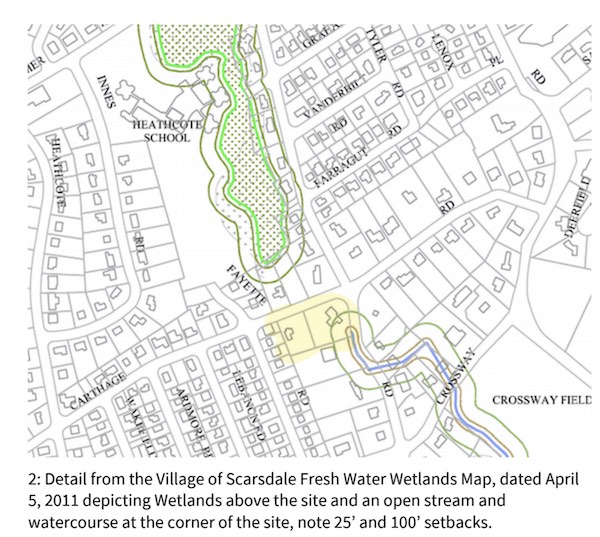
Jack Miller of 45 Fayette Road said, “I didn’t see the notice until Thursday.” He showed a series of historic village maps that included a pond at the present site of the Heathcote School and an open watercourse that ran from Lincoln Road to Crossway Field. He said, “there is a rare opportunity to restore an historic waterway … There is a stream that goes from 50 Lincoln Road to the firehouse.” In a letter to the Planning Board he said, “The thought of re-routing a watercourse off its long-time course could be catastrophic. To people who live in the area.”
Discussing the house he said, “46 Lincoln is a Usonian style house modelled after Frank Lloyd Wright’s Falling Water. The open stream was a feature of the house. The stream is still there but sometime in the 1970’s it was covered over. Relocating this stream makes this a tricky site. I know how I would vote on this if I was in your shoes. Three houses here would be detrimental to the neighbors.”
Jessica Bandel said she lives “adjacent to 101 Carthage Road.” She said, “We all have to live with the flooding. I do not consent to any work in the property buffer. She urged the Planning Board to “make the ethical decision.”
Board Enacts Six Month Building Moratorium in Scarsdale
- Details
- Written by Joanne Wallenstein
- Hits: 4563
 After much debate, discussion and two public hearings the Scarsdale Board of Trustees passed a resolution calling for a six-month building moratorium at their meeting on January 9, 2024. The moratorium calls for modest reductions in the allowable floor area ratio (FAR) of homes, building coverage and lot coverage and bars whole home demolitions during the six-month period. It continues to allow renovations that do not exceed the maximum size and coverage regulations and subdivisions that meet the temporary guidelines.
After much debate, discussion and two public hearings the Scarsdale Board of Trustees passed a resolution calling for a six-month building moratorium at their meeting on January 9, 2024. The moratorium calls for modest reductions in the allowable floor area ratio (FAR) of homes, building coverage and lot coverage and bars whole home demolitions during the six-month period. It continues to allow renovations that do not exceed the maximum size and coverage regulations and subdivisions that meet the temporary guidelines.
The original resolution, calling for a more complete halt to applications, was modified after the Board received feedback from the community. The approved version permits renovations and subdivisions but cuts back the size of homes, requiring a 5% cut in the floor area ratio, a 5% cut in building coverage and a 10% cut in total lot coverage.
During this time, the Village will consider amendments to Village land use code and processes to address home bulk, neighborhood character, flooding and tree removal. At the December 26, 2023 meeting, the Board retained BFG Planning to review the Village’s zoning code and make recommendations.
Explaining his vote in support of the moratorium, Deputy Mayor Randy Whitestone summarized many of the concerns that led the Village to this moment. He said:
“I don’t approach this vote lightly. I have spent time thinking about the impact that a temporary moratorium will have on the community – as well as the impact of not having a moratorium.
For me, the key considerations are:
-What is the most effective way to ensure that any code changes and adjustments to our land use procedures are the product of careful objectives-based analysis and subject-matter expertise. We’ve enacted various code changes in recent years, but they haven’t addressed the issues we’re discussing – and trying to solve for – in a holistic way.
-How can we ensure that our housing stock continues going forward to meet the needs of our families in ways that account for the needs of neighbors and the broad community and the character that has long defined our village in a park.
-How can we make sure village staff have the right tools at their disposal to deal with the amount and pace of development and the resulting impacts on our infrastructure.
-How do we ensure that our land use boards have the necessary interconnectivity, training, and division of responsibilities – avoiding loopholes that advantage one group over another -- to deal with the at times rapid-fire pace of applications.
Finally, what approach to local land use regulation best serves the most people, because my dedicated colleagues and I serve the interests of the entire community not any specific group, or ourselves.
Change is a constant, and Scarsdale through the years has proved adaptable, vibrant, and dynamic; just look at the rebound from Covid! But our village has also always tried to be the best version of itself, defined by a community mindset and sense of public spirit. In line with this, I believe a brief and somewhat limited “time out” – importantly, both finite in terms of time and limited in scope – gives us a chance to undertake bringing our long-run code in line with real-world outcomes and best practices to ensure that they align with the community's long-term vision. The larger point is that this is not about standing still, this is about moving forward in a thoughtful way.”
The call for a moratorium originated with Edgewood resident Jim Detmer who fought the demolition of a treasured home in “The Woods” section of Scarsdale and the plan to subdivide the property. He rallied neighbors to object and also posted a petition calling for a reconsideration of Village policy.
Commenting on the Board’s 6-1 vote to approve the moratorium Detmer said, “The moratorium allows the BOT, with the help of consultants and the community, the space and time to effectively address important local land use and building code issues. It is critical that the Board discuss, draft and enact changes in zoning and land use that reflect the values of the citizens of Scarsdale. The amended moratorium that was approved last night is an important initial compromise. Neither side got everything they wanted. Obviously, there is a lot of work to be done and a tight timeline to consider. We would do well to help and assist the Board in their effort to evaluate these problems, working towards meaningful long-term solutions that reflect the principles and values of Scarsdalians.”
The resolution was highly controversial. The Scarsdale Planning Board issued a memo against it, and builders, architects, realtors and tradesmen fought hard to prevent its passage.
The development community argued that the move would hurt Scarsdale’s economy, reduce property values, impact earnings for the construction industry, realtors and tradesmen and deter buyers and sellers. About flooding, they said that the Village’s aging infrastructure, not new construction, was the issue and that the Village should invest in upgrading the drainage.
Residents who supported the moratorium asked trustees to examine ways to limit the bulk of new homes, prevent the teardown of neighborhood homes, save trees and address flooding. Susan Douglass, a former president of the Scarsdale Forum called in to the meeting and said, “I am dismayed by the huge, oversized homes being built. A thoughtful pause on what we are trying to achieve would be helpful. I think there is a silent majority of people who want the board to take a pause to think about our infrastructure and how can we support more homes, larger homes and protect our trees. Let’s just be careful – once everything is gone we can’t put it back. Be mindful and listen and take care of our valuable resources before they are gone.”
Rain and winds may have deterred some from coming to Village Hall for the hearing, but there was a sizable contingent of builders, architects, realtors and an engineer at Village Hall and more commented via Zoom. Many echoed what they said at the December 19 hearing, but here is a sampling of their remarks. You can watch a recording of the entire hearing at Scarsdale.com.
Rob Frangione an engineer from CT said, “(The moratorium) will do nothing to stop the flooding in town. Some are blaming rapid overdevelopment. In Scarsdale all runoff needs to be considered. After development there is less runoff than before. I believe it’s a problem with the Village’s drainage system – the Village needs to invest in its drainage infrastructure. It is easy to blame the drainage woes on development.”
Architect Roz Young said she “supports code review but not a moratorium.” She asked a series of questions about which rules would apply to which projects and was told that an FAQ from the Building Department would be posted to answer those questions.
Bana Choura, also a local architect, said, “I still object to the moratorium.” She said that the “5% reduction in the FAR could mean the loss of 200 square feet, or an extra bedroom on homes on smaller lots.”
Boning Liu of 45 Jefferson who is an engineer said, “Halting development alone may not address flooding. We need a comprehensive drainage plan to address climate change. Consider the bigger picture.”
Raj Krishnan, a local developer and physician said, “My wife and I have grown to be aware of socially conscious building. We are builders and Scarsdale has offered a wonderful opportunity to do this. We are subdividing to enhance the texture and diversity of Scarsdale. We all live in a subdivision. The moratorium is a penalty against builders and the public and those who want to move here. People want to come here and live in new houses. It would be a travesty to stop development in Scarsdale. These new houses increase the revenues. Let’s take those funds and put them into infrastructure improvements.”
Lee Handler, a builder who now lives at 17 Morris Lane said, “I used to live at 14 Lebanon Road and I had a sump pump. I got a violation notice from the Village – I put in a dry well and nothing was wet after that. It solved my water problem. I understand that people don’t want to spend money on things you can’t see. There is no water issue in the homes that I build. If your house doesn’t have an adequate draining system you are going to have a water problem.If you implement the 5% reduction you are going to devastate Edgewood. The housing values are going down. I think the Village should offer incentives to put in drainage.”
Builder Eilon Amidor said, “It is a bad mistake to vote on the moratorium. Most of the speakers who came today were mostly against the moratorium. A moratorium can devastate the Scarsdale real estate. Why don’t we make a referendum. It is a big change to just be voted on by the Trustees. You are talking about losing half a billion in real estate. This needs to be voted on by the whole Village of Scarsdale. Only 100 people started the movement. Make it to the entire Village and I am sure you are going to find out that people want not to lose money. Every new construction takes care of water. If you deem a house is historical you can allow people to build it the same way – the same material. No reason to cause more economical hardship. People who want to sell their houses are going to have a hard time selling it.”
Speaking in support of the moratorium Maura Lee said, “I think there is a strong majority who are not speaking because it’s not in their backyard. Many are dismayed by the building that is going on. The green space that we’re taking away, cannot be good. I have lived in Scarsdale my whole life. We are knocking down Scarsdale and building many of the same homes and I do support the moratorium.”
Jeff Wang of Ferncliff Road said, “In the past few years three new houses were built around my house. One is elevated. A huge house replaced a small house. They pump water out of their basement, down their driveway to a small drain on my street and flooded the street and my basement. Everybody is a victim.The building department did not make sure that the water was properly drained.”
Anne Hintermeister felt that the resolution did not go far enough. She said, “Subdivision applications were wisely included in the initial moratorium resolution. “Rampant subdividing,” to quote the Scarsdale Inquirer editorial supporting the first draft, was among the concerns that led to the proposed moratorium. Building two houses in a lot previously occupied by a single house could double the negative “pervasive adverse impacts” described in the moratorium resolution—specifically large-scale tree removal, elimination of permeable surfaces, bulk, and loss of neighborhood character.
So I was surprised to see that the moratorium was revised to allow subdivision applications to continue subject only to the new FAR and coverage haircuts devised by the Board on each of the new houses in the subdivided property.
Even if the FAR and coverage “haircuts” in the new draft are sufficient to protect the community from pervasive adverse impacts from new and remodeled houses generally, why would you assume that replacing a home with two compliant houses will have no greater negative impact on stormwater, on tree removal, on neighborhood character?
The stakes are high. Pausing subdivision applications does not inconvenience residents. Pause them while the Board and the land use officials and the consultant devise a carefully considered plan to address them, including possible changes to the multiple board review process that the land use Chairs discussed at a work session last month.”
Ultimately, the resolution passed, with six trustees in favor and one opposed.
Trustee Ken Mazer said, "The first draft of the proposal limited all construction for six months. After back and forth with residents and people in the industry I believe a reasonable compromise has been reached to give us space to craft a land use policy that reflects current land use needs."
Explaining her vote, Trustee Dara Gruenberg said, "We are not going to make everyone happy. But I think ultimately we have found something that I feel comfortable voting in support of that is balanaced. I do feel comfortable because we have worked with land use experts and our village professionals on this moratorium proposal and we have a land use consultant lined up who is already working."
Trustee Karen Brew said, "This has been a difficult debate. I do think that as trustees we represent the entire community. And we have to vote in their interest. I think there are economic consequences that everyone suffers. I think a six month pause on the rapid building will allow us to make some modifications to do what’s best for the entire community so that the residents don’t bear the cost for development."
Trustee Jeremy Gans was the sole no vote and explained, “I agree a review is needed but I don’t support a moratorium. Our job is to set policy. In the past we have relied on consultants and land use board and staff. We have not engaged with staff on these questions. The outside consultant has not weighed in. Our planning board advised against it. Our zoning board chair wrote a memo advising against it. No board has been asked to comment. This is temporary it is not permanent. During the six-month period we will hear from consultants and land use boards and I wish that had happened before.”













